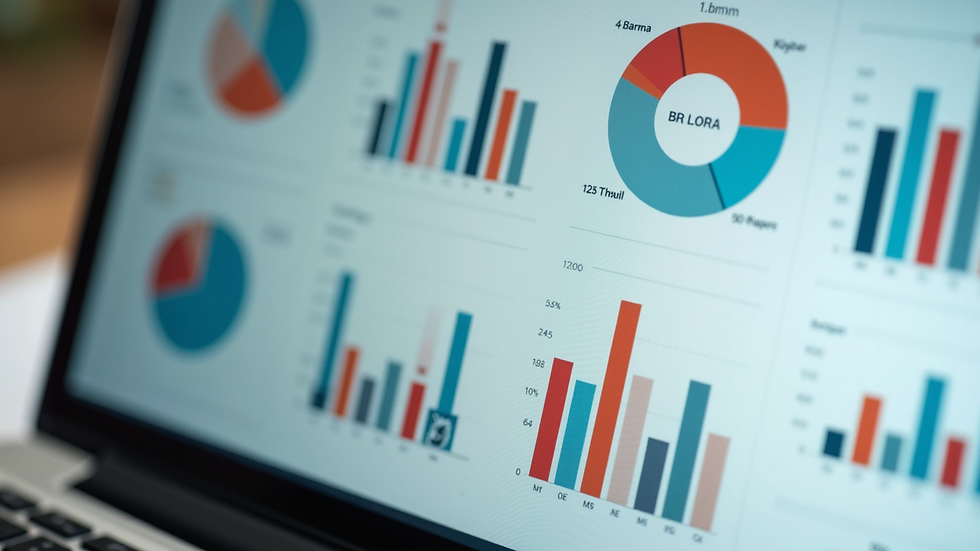Is Data Equity Really That Important?
- Meena Das

- Aug 11
- 4 min read
When I first started working with non-profits, I quickly realized that data isn’t just numbers on a spreadsheet. It’s a powerful tool that can shape decisions, influence policies, and ultimately change lives. But here’s the catch: not all data is created or used equally. That’s where the concept of data equity comes into play. It’s about fairness, inclusion, and ensuring that every voice is heard and represented accurately. Let’s dive into why this matters so much in the non-profit world.
Why the Importance of Data Equity Cannot Be Overstated
Non-profits exist to serve communities, often those that are marginalized or underserved. If the data we collect and analyze doesn’t reflect the true diversity and complexity of these communities, we risk making decisions that exclude or harm the very people we want to help. Imagine trying to allocate resources without understanding who needs them most or designing programs without knowing the barriers people face. It’s like trying to navigate a city without a map.
Data equity ensures that data collection, analysis, and use are done with fairness and justice in mind. It challenges us to ask: Whose data are we collecting? Who is represented? Who might be missing? And how are we using this information to create positive change?
By prioritizing data equity, non-profits can:
Build trust with the communities they serve by respecting their stories and experiences.
Make informed decisions that address real needs rather than assumptions.
Promote transparency and accountability in their work.
Empower marginalized groups by giving them a voice in data processes.

How Data Inequity Can Undermine Non-Profit Goals
Let’s be honest - data inequity can be a silent killer of good intentions. When data is incomplete, biased, or misinterpreted, it can lead to ineffective programs or even reinforce existing inequalities. For example, if a non-profit serving homeless populations only collects data from shelters but ignores those living on the streets, their understanding of the issue is incomplete. This gap can result in services that don’t reach everyone in need.
Another common pitfall is relying on outdated or culturally insensitive data collection methods. Surveys that don’t consider language barriers or cultural differences might exclude entire groups. This exclusion not only skews the data but also perpetuates systemic inequities.
To avoid these traps, non-profits must:
Engage communities in the data process - involve them in designing surveys and interpreting results.
Use multiple data sources - combine quantitative and qualitative data for a fuller picture.
Continuously evaluate and update methods - ensure they remain relevant and inclusive.
By doing so, organizations can create programs that truly reflect the needs and strengths of their communities.

What are the principles of data equity?
Understanding the principles behind data equity helps us put it into practice effectively. These principles act as a compass, guiding non-profits toward ethical and impactful data use.
Inclusivity: Data should represent all segments of the community, especially those historically marginalized or overlooked.
Transparency: Organizations must be open about how data is collected, used, and shared.
Accountability: Non-profits should be responsible for the impacts of their data practices on communities.
Respect for privacy and consent: Individuals’ rights to control their personal information must be honored.
Community empowerment: Data should be used to support and uplift communities, not exploit or harm them.
Applying these principles means more than just checking boxes. It requires ongoing reflection, dialogue, and commitment to justice. For example, before launching a new data initiative, ask: Are we including voices from all parts of the community? Have we explained how the data will be used? Are we prepared to act on what the data reveals, even if it challenges our assumptions?
These questions keep us grounded and focused on the real purpose of data - to serve people, not just numbers.
Practical Steps to Promote Data Equity in Your Organization
So, how can you bring data equity into your non-profit’s daily work? Here are some actionable recommendations that I’ve found effective:
Train your team: Educate staff and volunteers about data equity principles and why they matter.
Co-create data tools: Work with community members to design surveys, interviews, and data collection methods.
Audit your data: Regularly review your data sets for gaps, biases, and representation issues.
Use disaggregated data: Break down data by race, gender, age, and other factors to uncover hidden disparities.
Share findings openly: Present data in accessible formats and languages to the communities involved.
Advocate for resources: Push for funding and technology that support equitable data practices.
Remember, promoting data equity is a journey, not a one-time project. It takes patience, humility, and a willingness to learn from mistakes. But the payoff is worth it - stronger programs, deeper community trust, and more meaningful impact.

Embracing Data Equity as a Path to Lasting Change
When we commit to data equity, we’re not just improving how we collect and use information. We’re affirming the dignity and worth of every individual in our communities. We’re saying that their stories matter, their experiences count, and their voices deserve to be heard.
This commitment transforms how non-profits operate. It shifts the focus from top-down decision-making to partnership and co-creation. It challenges us to confront uncomfortable truths and to be transparent about our successes and failures.
Most importantly, it opens the door to more just and effective solutions. When data truly reflects the people it represents, we can design programs that break cycles of inequality and build stronger, healthier communities.
So, let’s embrace this challenge together. Let’s make data equity a cornerstone of our work. Because when data is fair, our impact can be too.




Comments